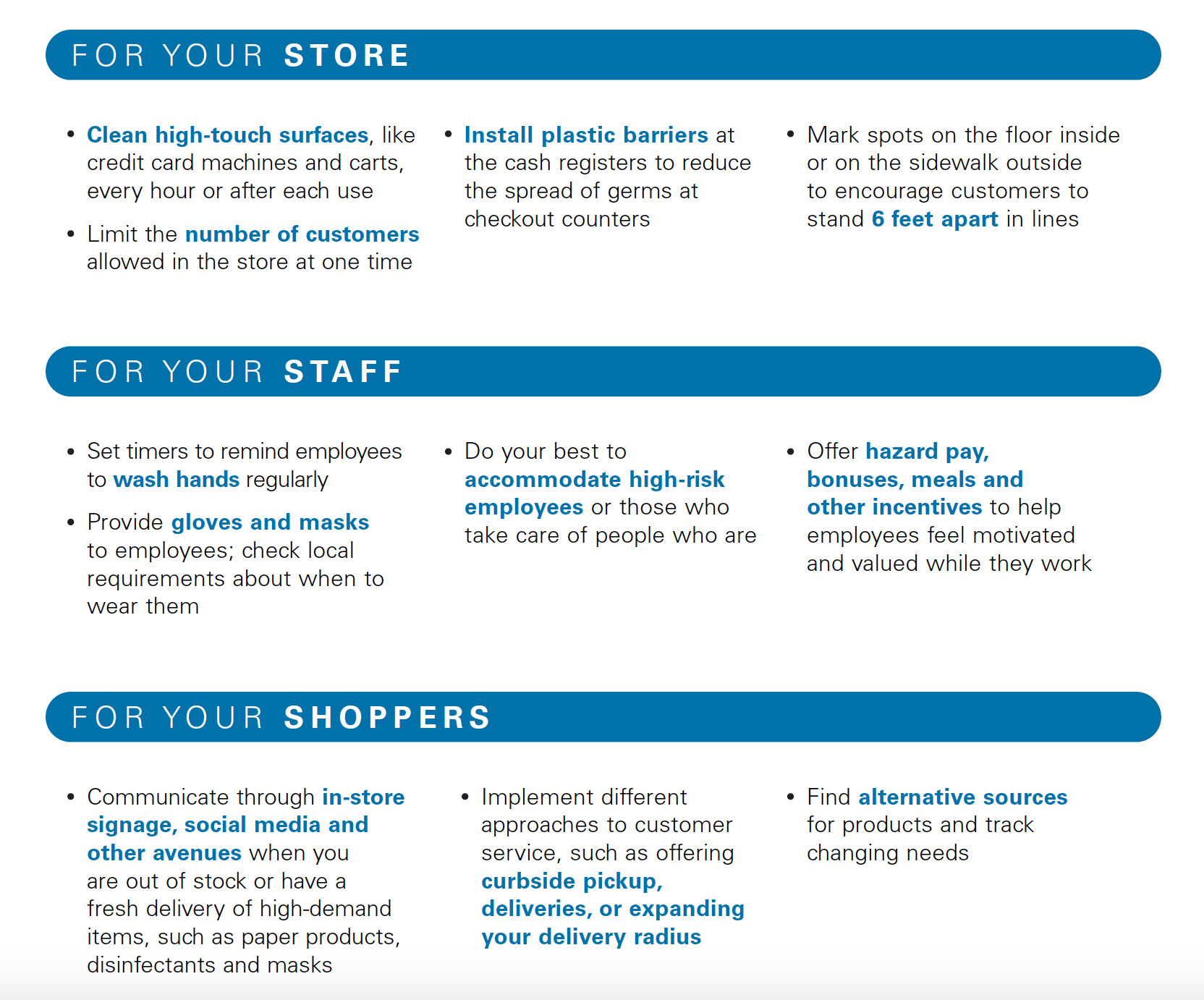Normally at this time of year, retailers would be planning for the unpredictable spring season that often brings severe thunderstorms, tornadoes and hurricanes. But nothing is normal about the second quarter of 2020.
Home improvement retailers know they are lifelines to products and services that protect and restore communities, even when their stores and employees have been affected.
In 2006, a tornado destroyed a Missouri lumber company, but the operation was opened in temporary trailers the next day to supply the people and businesses in the damaged community. After Hurricane Katrina, a Mississippi store stayed open for five 12-hour days without electricity in order to serve their ravaged community.
These stories are indicative of the resourcefulness and dedication of retailers in this industry. These workers now find themselves serving on the front lines of a once-in-a-century pandemic that has completely changed how many businesses can operate in a short time frame. How do companies handle an emergency of this magnitude without any prior experience? They do it with the same creativity and dedication they would apply to any emergency.
In this article, find best practices for preparing for or adapting to crises. Then, read stories of how retailers have adapted their operations to continue serving their communities at hardwareretailing.com/covid.
Part 1
Take Action During the Current Crisis
In most areas, home improvement stores have been deemed essential businesses and can continue to operate, placing even greater responsibility on retailers when much is unknown. To keep everyone safe, having a plan is critical.
The best response to the unexpected is to be informed and make a plan as soon as possible, even if it changes frequently. Many retailers who initially worried about keeping toilet paper, hand sanitizer and cleaning supplies in stock have since implemented detailed pandemic plans for keeping stores clean and customers safe. Read some of the plans here and share your own solutions with the Hardware Retailing team at editorial@nrha.org.
Part 2
Create a Readiness Plan
Home improvement operators, due to how important their products, expertise and services are to communities during emergencies, need to plan well to serve their communities during times of need. Below are suggestions from the Department of Homeland Security for creating a general business preparedness plan to help your operation and employees be ready.
- Know the Common Risks: Be aware of the natural disasters that are common in your area and determine other potential hazards to your business, including human-caused and technological crises, such as extended power outages and hacked data. Create a plan for each scenario.
- Identify Who Can Help: Make a contact list that includes suppliers, backup suppliers and local contractors you can seek help from during an emergency. Be sure the list stays current.
- Find a Backup Location: Create a continuity of operations plan in case your building is inaccessible. Many retailers have successfully moved operations into nearby trailers or elsewhere on the property. Consider making arrangements with another business to use their facilities during a disaster.
- Plan for Escape and Shelter: Develop clear, thorough evacuation and shelter-in-place plans that can be quickly accessed and understood by anyone during different types of disasters.
- Know Your Systems: Identify operating systems critical for recovery, including emergency payroll and accounting systems necessary for paying bills and tracking and documenting expenses during a disaster.
- Plan and Practice as a Team: When developing an emergency plan, include all employees in the planning. Review the plan annually and conduct drills. Make sure everyone understands the procedures and what each individual’s responsibilities are.
- Map Out Your Operation: Create a site map of your business that includes access to utilities, protection systems and emergency equipment and shows access roads, parking areas, outbuildings and entrances. Share a copy with local emergency service providers and with employees responsible for building management and security.
- Keep Your Plan Safe: Keep electronic backups of your emergency contact list and other important documents, but also store them in an emergency kit off-site, in case one type of backup is more accessible than the other.
- Assess the Necessities: Determine which employees, procedures and equipment are imperative to keep your business operational. When possible, make backup plans so a single employee’s vacation or health crisis does not hinder your company’s emergency response.
- Assign Key Roles: Create a succession of management that includes at least one person not located at the store or headquarters who can serve as a contact for customers and employees in case phone lines at the store are down or to manage other communications and logistics.
Part 3
Become a Community Resource
With plans in place, home improvement retailers can help their communities prepare for or respond to emergencies. Tornadoes, snowstorms, hurricanes and floods can displace residents from their homes or interrupt critical utility services, while biological hazards, like COVID-19, can isolate people with only limited supplies. Below are three ways retailers can help customers prepare for emergencies before they happen.



Click here download and print the FEMA Emergency Supply Checklist.
 Hardware Retailing The Industry's Source for Insights and Information
Hardware Retailing The Industry's Source for Insights and Information









